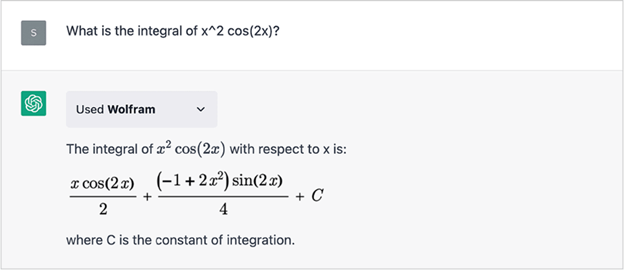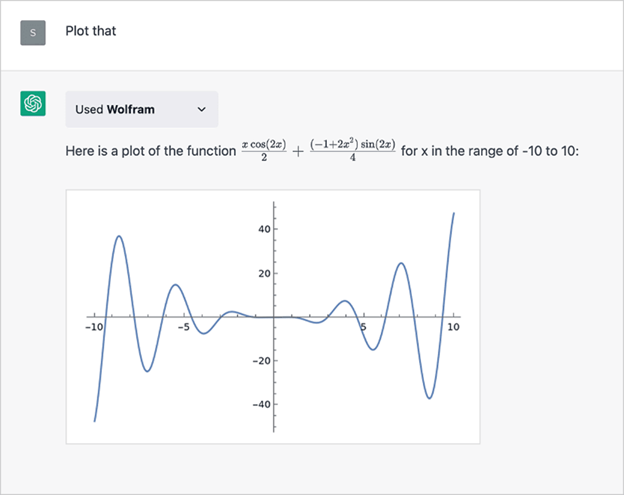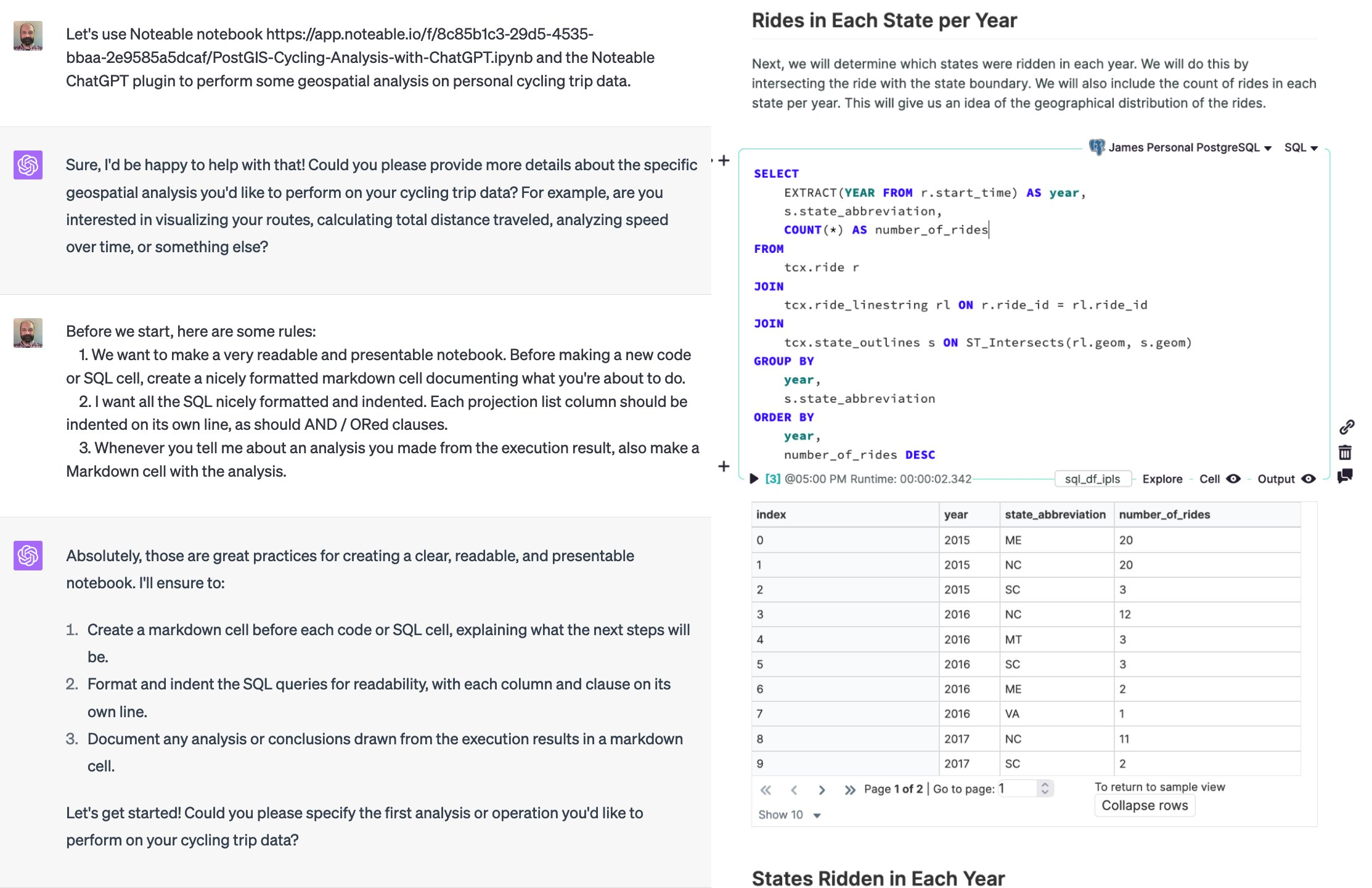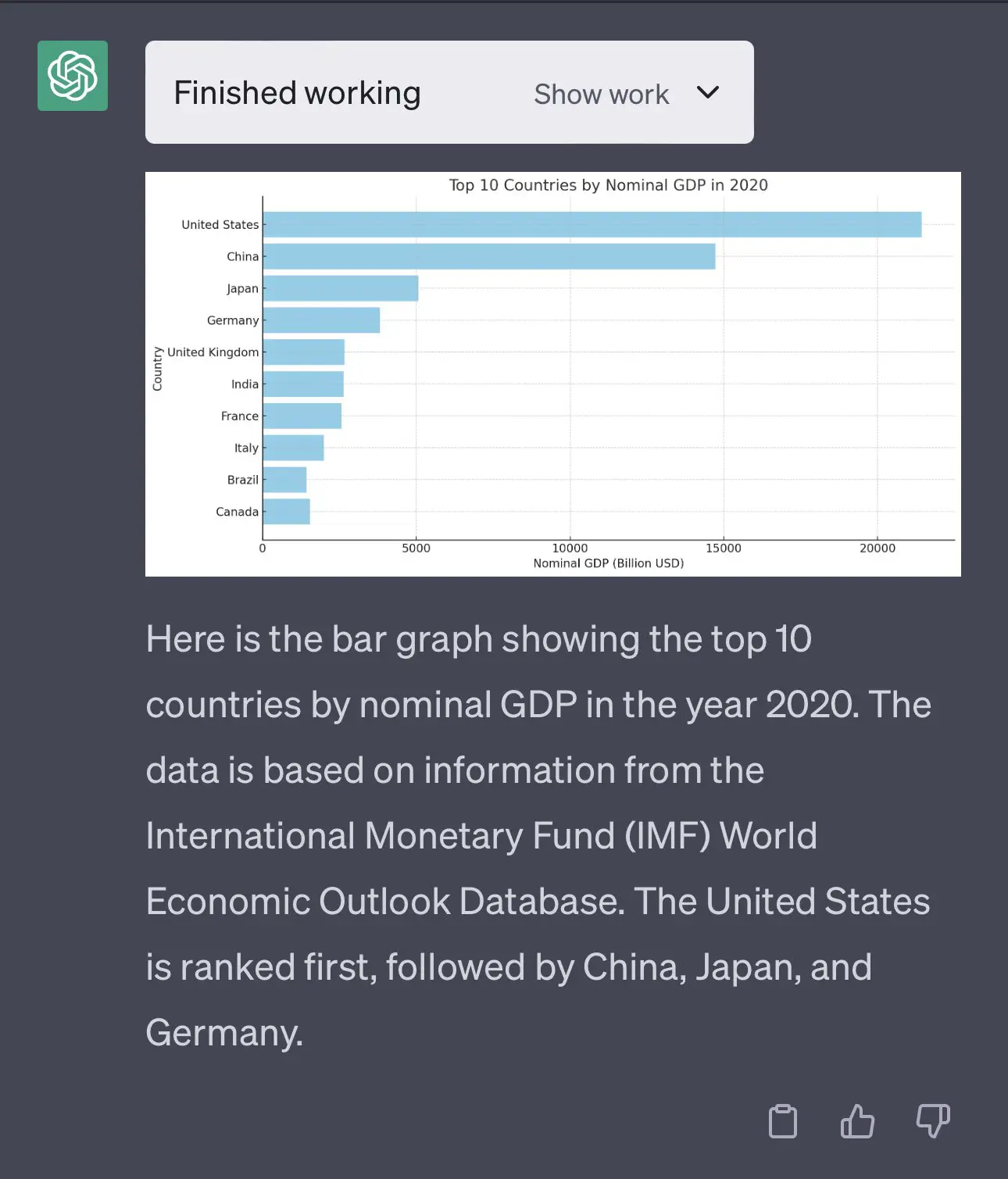ChatGPT made a significant market entrance, shattering records by swiftly reaching 100 million monthly active users in just two months. Its trajectory has since been on a consistent growth.
Notably, ChatGPT has embraced a range of plugins that extend its capabilities, enabling users to do more than merely generate textual responses. In this article, we’re diving into six awesome ChatGPT plugins that are game-changers for data science.
These plugins are all about making life easier by automating tasks, browsing the web, interpreting code, and optimizing workflows, turning ChatGPT into an indispensable tool for data pros.
What are ChatGPT Plugins?
ChatGPT plugins serve as supplementary features that amplify the functionality of ChatGPT. These plugins are crafted by third-party developers and are readily accessible in the ChatGPT plugins store.
ChatGPT plugins can be used to extend the capabilities of ChatGPT in a variety of ways, such as:
- Accessing and processing external data
- Performing complex computations
- Using third-party services
Let’s dive into the top 6 ChatGPT plugins tailored for data science. These plugins encompass a wide array of functions, spanning tasks such as web browsing, automation, code interpretation, and streamlining workflow processes.
1. Wolfram
The Wolfram plugin for ChatGPT is a game-changing tool that significantly enhances ChatGPT’s capabilities by integrating the Wolfram Alpha Knowledgebase and the Wolfram programming language (Wolfram Language). This integration allows ChatGPT to go beyond simple text-based responses, enabling it to perform complex computations, retrieve real-time data, and generate dynamic visualizations—all within the ChatGPT interface.
Here are some of the things that the Wolfram plugin for ChatGPT can do:
- Perform complex computations: The Wolfram plugin enables ChatGPT to perform high-level mathematical and scientific calculations. From solving equations and computing derivatives to handling matrix operations and symbolic algebra, it provides precise answers for complex numerical problems. Here’s an example of Wolfram enabling ChatGPT to solve complex integrations.

- Generate visualizations: Instead of relying on text alone, the Wolfram plugin allows ChatGPT to generate graphs, charts, and other visual representations. Whether plotting mathematical functions, creating statistical charts, or mapping geospatial data, these visuals help make complex information more accessible and engaging.

Read this blog to Master ChatGPT cheatsheet
- Real-Time Data Access: ChatGPT can now retrieve live data from reliable sources. Whether you need stock market updates, weather forecasts, or astronomical insights, this plugin ensures that the information you receive is current and relevant.
- Scientific Simulations and Modeling: With access to Wolfram Language, ChatGPT can simulate physical systems, analyze electrical circuits, and even assist in machine learning model development. This feature benefits engineers, researchers, and data scientists looking for quick, accurate simulations.
2. Noteable:
The Noteable Notebook plugin integrates ChatGPT into the Noteable computational notebook environment, making it easier to perform advanced data analysis tasks using natural language. With this plugin, users can analyze datasets, generate visualizations, and even train machine learning models—all without requiring extensive coding knowledge.
Here are some examples of how you can use the Noteable Notebook plugin for ChatGPT:
-
Exploratory Data Analysis (EDA): The Noteable plugin allows users to quickly analyze datasets using ChatGPT. You can generate descriptive statistics, identify trends, and create insightful visualizations. Whether you need to summarize data distributions, detect outliers, or examine correlations, the plugin helps streamline the entire EDA process.
-
Machine Learning Model Deployment: With the ability to train and deploy machine learning models, this plugin makes AI more accessible. You can build models for classification, regression, and forecasting without writing complex scripts. Whether you’re predicting customer behavior, analyzing financial trends, or automating decision-making, Noteable simplifies the workflow.
Learn to deploy machine learning models to a web app or REST API with Saturn Cloud
-
Data Manipulation and Preprocessing: Cleaning and transforming raw data is a critical step in data science, and the Noteable plugin makes it more intuitive. You can perform data wrangling tasks like handling missing values, normalizing datasets, and engineering new features—all through simple, natural language commands.
-
Interactive Data Visualization: The plugin enables ChatGPT to create interactive charts, heatmaps, and geospatial visualizations with ease. Whether plotting time series trends, generating scatter plots, or mapping geographic data, it allows users to explore their datasets visually and derive meaningful insights. Here’s an example of a Noteable plugin enabling ChatGPT to help perform geospatial analysis:

3. Code Interpreter
The Code Interpreter ChatGPT plugin is a powerful tool that enhances ChatGPT’s ability to execute Python code, handle complex computations, and generate visualizations—all within a conversational interface. This plugin bridges the gap between AI-powered assistance and hands-on programming, making it an invaluable resource for data scientists, analysts, and engineers.
Explore Top 6 Popular Python libraries for Data Science
Here are some the key features and capabilities of this ChatGPT plugin:
-
Execute Python Code Instantly: The Code Interpreter ChatGPT plugin allows users to run Python scripts in real-time. Whether you need to perform mathematical calculations, manipulate text, or automate repetitive tasks, this feature enables seamless coding execution without requiring an external environment.
-
Advanced Data Analysis: Users can leverage the plugin to load datasets, perform statistical analysis, and extract insights from structured and unstructured data. From calculating summary statistics to detecting patterns, the plugin simplifies complex analytical workflows.
-
Generate Dynamic Visualizations: The plugin can create charts, graphs, and even geospatial plots directly within ChatGPT. Whether visualizing trends with line charts, exploring distributions with histograms, or mapping data points, it makes data storytelling more interactive and insightful. Here’s an example of data visualization through Code Interpreter.

- Support for File Handling: The Code Interpreter ChatGPT plugin enables users to upload and process CSV, Excel, and other file formats. This makes it easy to clean data, merge datasets, and perform feature engineering without needing third-party tools.
4. ChatWithGit
Managing Git repositories can be complex, but the ChatWithGit ChatGPT plugin simplifies the process by enabling direct interactions with Git repositories from within ChatGPT. Whether you’re reviewing code, tracking changes, or managing pull requests, this plugin makes version control more efficient and accessible.
To use ChatWithGit, you first need to install the plugin. You can do this by following the instructions on the ChatWithGit GitHub page. Once the plugin is installed, you can start using it to search for code by simply typing a natural language query into the ChatGPT chat box.
Learn more about ChatGPT enterprise
There are several powerful features that make the ChatWithGit a must-have for developers working with Git repositories. From navigating large codebases to streamlining collaboration, here’s how this plugin enhances your workflow:
-
Effortless Repository Navigation: Quickly explore project structures, search for specific files, and retrieve key metadata without manually sifting through repositories. This makes understanding large codebases much easier.
-
Commit and Pull Request Analysis: Stay on top of project changes by viewing commit histories, comparing file modifications, and analyzing pull requests. This feature is particularly useful for tracking contributions in collaborative projects.
-
Code Review and Documentation Assistance: The plugin helps summarize code changes, suggest improvements, and generate documentation, making it a valuable tool for teams looking to maintain high-quality code and clear project records.
-
Seamless GitHub Integration: With direct access to GitHub repositories, you can fetch issue details, check branch statuses, and automate tasks like merging branches or managing CI/CD pipelines—all without leaving the ChatGPT interface.
5. Zapier
Managing multiple apps and workflows can be overwhelming, but Zapier simplifies automation by allowing ChatGPT to interact with thousands of apps seamlessly. Whether you need to send emails, update spreadsheets, or manage project tasks, this plugin helps you streamline repetitive processes with ease.
This ChatGPT plugin offers several powerful features that make automation effortless. By connecting ChatGPT to various applications, it helps eliminate manual work, boost efficiency, and enhance productivity. Here’s how it can transform your workflow:
-
Seamless App Integration: Connect ChatGPT with over 5,000 apps, including Gmail, Slack, Trello, Google Sheets, and more. Automate tasks like sending messages, updating databases, and scheduling events—all through natural language commands.
-
Automated Task Execution: Set up workflows (Zaps) that trigger actions based on specific events. Whether it’s automatically creating a Trello card from an email or logging form responses into a spreadsheet, the plugin handles repetitive tasks effortlessly.
-
Data Synchronization and Management: Keep data up to date across multiple platforms without manual intervention. Sync information between apps, ensuring consistency and reducing the risk of human error.
-
Custom Workflow Creation: Design complex, multi-step automations tailored to your needs. For instance, you can set up a workflow where an email attachment is saved to Google Drive, its details are logged in a database, and a notification is sent—all in one seamless process.
6. ScholarAI
Keeping up with the latest academic research can be challenging, but the ScholarAI makes it easier than ever to find, summarize, and cite scholarly papers. Whether you’re a student, researcher, or professional seeking credible sources, this plugin streamlines the process of discovering high-quality academic content.
The ScholarAI plugin is packed with features that help users navigate the vast world of academic research. From locating peer-reviewed studies to generating citations, here’s how it enhances your workflow:
-
Instant Access to Academic Papers: Quickly retrieve research articles from reputable journals and databases across various disciplines, including science, technology, medicine, and social sciences. No more endless searching—get the insights you need in seconds.
-
Smart Search and Filtering: Narrow down search results by keywords, topics, or specific authors. The plugin ensures you get the most relevant and up-to-date research tailored to your needs.

-
Summarization of Research Papers: Save time by receiving concise summaries of academic studies, highlighting key findings, methodologies, and conclusions. This makes it easier to grasp complex research without reading entire papers.
-
Citation Assistance and Reference Management: Generate properly formatted citations in styles like APA, MLA, and Chicago. Keep your research well-documented and organized without manual formatting.
Experiment With ChatGPT Now!
From computational capabilities to code interpretation and automation, ChatGPT is now a versatile tool spanning data science, coding, academic research, and workflow automation. This journey marks the rise of an AI powerhouse, promising continued innovation and utility in the realm of AI-powered assistance.
To wrap it up, whether you’re crunching numbers with Wolfram or streamlining tasks with Zapier, ChatGPT’s plugins have turned it into a versatile AI assistant for data science.
Learn about easily building AI-based chatbots in Python
If you’re into data analysis, coding, or academic research, these plugins are here to make your work smoother and more efficient. As ChatGPT keeps growing its ecosystem, its impact on data science and AI assistance is only going to get bigger.








